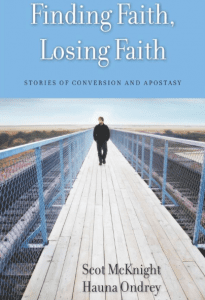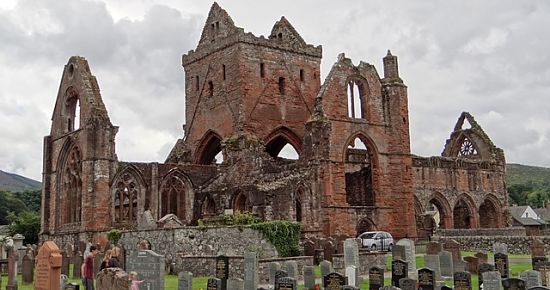The fourth chapter of Joel B. Green’s book Body, Soul, and Human Life: The Nature of Humanity in the Bible deals with conversion and salvation. The emphasis in this book is that being human is a totally embodied experience – sin is an embodied phenomenon; so are virtue and conversion. In the last post we looked at Dr. Green’s discussion of neuroscience as it relates to conversion. Dr. Green also looks at the text of Luke-Acts to get a picture of conversion as taught by Jesus and experienced in the early church. Conversion is an embodied process, a reorientation of life in God’s direction and reordering of life in line with God’s plans. This requires being in community and in communion with God’s people. Joining the church – the ecclesia – the body of God’s people – is so foundational it goes without saying.
 Repentance and conversion in Luke-Acts is not a theological abstraction. It is “aimed at a transformation of day-to-day patterns of thinking, feeling, believing, and behaving.” (p. 123) This begins with the pronouncements in Luke 1, John will turn the people back to righteousness and Jesus will establish his kingdom and reign over God’s people. This reign will be embodied with justice for the oppressed.
Repentance and conversion in Luke-Acts is not a theological abstraction. It is “aimed at a transformation of day-to-day patterns of thinking, feeling, believing, and behaving.” (p. 123) This begins with the pronouncements in Luke 1, John will turn the people back to righteousness and Jesus will establish his kingdom and reign over God’s people. This reign will be embodied with justice for the oppressed.
Both Jews and Gentiles are called to embrace a new way of viewing the world and of viewing God’s saving and forming work in the world.
For Luke, embracing this new conceptual scheme is a new way of seeing things, an opening of the mind to understand what was previously incomprehensible (cf. Luke 24:30-32, 44-48), that takes as its starting point the mission and message of Jesus, culminating in his death, resurrection, ascension, and outpouring of the Spirit at Pentecost. (p. 127)
This new way of seeing the world is foolishness to Jews and Gentiles alike. It requires conversion to the way of God.
What do you see as the primary elements of conversion to the way of God?
Conversion is not simply conversion to a new way of thinking, but to a new way of being and to a new social identity, that of being first and foremost part of the people of God.
If conversion is grounded in a fresh comprehension of the purpose of God as this is plotted in Scripture, then it is manifest in the community of God’s people who are constituted by this biblical narrative, and whose practices embody this spirituality and leverage the ongoing conversion of its membership. … Seen from this vantage point, conversion autobiographical reconstruction. Conversion shatter’s one’s past and reassembles it in accordance with the new life of the converted. Conversion shatters one’s past and reassembles it in accordance with the new life of the converted; former understandings of one’s self and one’s experiences are regarded as erroneous and are provided with new meaning (cf. Luke 9:23).
Conversion in Acts, and everyone involved in the church in Acts underwent reorientation and conversion, involves incorporation into the community of the church. It involved adopting its rituals and behaviors. The community of believers becomes one’s extended kin-group. We are what we do – there is no separation of being and action. Dr. Green outlines the rituals and behaviors comprising this socialization into the people of God.
Baptism.
Baptism serves a community-defining role and a community-forming role.
Baptism functions, on the one hand as the medium by which repentance comes to expression and, on the other, as the sign that forgiveness has been granted. To put it differently, baptism serves a community-defining role – communicating on the part of the baptized an unswerving loyalty to the Lord and on the part of the church the full incorporation of the baptized into the community. Baptism is both response and gift. (p. 130-131)
Economic koinonia.
It is crucial that we recognize that, as “fruits worthy of repentance,” practices of economic community and hospitality are not “things to do” for the converted. Such practices are not simply “logical consequences” of conversion as some interpreters might have it. The relationship is more organic, so that conversion generates such behaviors, is demonstrated in them, and is fueled by them. (p. 132)
In reading Dr. Green’s discussion here my thoughts strayed to the book of James and to Scot’s recent commentary on this book. The book of James is about, I suggest, community reshaping. Faith without works is dead. Faith that treats the rich with favor, faith that preaches without providing, faith that feeds dissension and division – this is not faith and is not a fruit of the Spirit of God.
Prayer.
For Luke, prayer is a practice that grows out and is formative of one’s convictions and commitments. It is, for him, the conceptual scheme of the converted in practice. … prayer is for the Christians in Acts a community defining practice, leading to the conformation of the community around the gracious God.
Individual and corporate prayer is both a part of being formed as a community of God’s people and a sign of a community that is formed around the purposes of God. We are in communication and relationship with our God and Maker.
Witness.
Then they gathered around him and asked him, “Lord, are you at this time going to restore the kingdom to Israel?” He said to them: “It is not for you to know the times or dates the Father has set by his own authority. But you will receive power when the Holy Spirit comes on you; and you will be my witnesses in Jerusalem, and in all Judea and Samaria, and to the ends of the earth.” After he said this, he was taken up before their very eyes, and a cloud hid him from their sight. Luke 1:6-9
The community of God’s people, through the power of the Holy Spirit, will be God’s witnesses in the entire world. The purpose of the community of God is to grow the community of God. Jesus Christ is Lord of all. But there is no separation between spiritual and physical needs of people. The early church (post Acts) grew, at least in part, because they were oriented toward service towards others in sickness and in poverty.
One significant conversion in the book of Acts is not individual but distinctly corporate. The church was converted into a welcoming open community of God. We see a process from a group of Jewish disciples and followers of Jesus to church comprised of followers of God transcending ethnic and economic divisions. The importance of the story of Cornelius and Peter is not the conversion of Cornelius, but the conversion of Peter and of the church.
… but this was only so as Jesus’ followers involved themselves in witness, engaged with persons outside their number, and came to embrace more fully the terms of their own faith. By engagement with persons at the “ends of the earth,” they were pressed in the direction of an end-of-the-earth “conceptual scheme”; having embraced God’s perspective on things, having relocated themselves int he story-line of God’s ancient purpose, they found themselves in a process of transformation, being shaped so as more faithfully to incarnate this pattern of faith and life. (p. 134)
Communion.
Dr. Green does not include this in his list – but any discussion of the embodied practice of the church that does not include the Lord’s supper is incomplete in my view. Jesus instituted the practice at the Last Supper.
After taking the cup, he gave thanks and said, “Take this and divide it among you. For I tell you I will not drink again from the fruit of the vine until the kingdom of God comes.” And he took bread, gave thanks and broke it, and gave it to them, saying, “This is my body given for you; do this in remembrance of me.” In the same way, after the supper he took the cup, saying, “This cup is the new covenant in my blood, which is poured out for you. Luke 22:17-20
While I do not believe in a “real presence” in the bread and wine, I do believe that the embodied practice of remembrance with bread and wine (or grape juice) is an essential and indispensable part of Christian community and practice. It was instituted by Jesus and practiced from the very beginning.
Summary – Embodied Conversion and Embodied Christians.
Within the book of Acts and the early church everyone was a convert. Everyone from Peter and Paul and beyond was converted from an old way of looking at the world and God’s work in the world to a radically new way of viewing the world. It didn’t come by praying a sinners prayer with intellectual assent to God’s plan of salvation. It came by believing and reorienting their entire outlook and way of life to be in accord with God’s plan for and work in the world.
While many later Christians may not have experienced the same radical conversion and redirection, there is still a call for a fully embodied commitment to be the people of God. This requires intentional pursuit of the way of God, including the embodied practices of baptism, communion, economic koinonia, prayer, and witness. Although I grew up in the evangelical church and was confronted by the sinner’s prayer many times (prayed it more than once) I don’t think there was a radical redirection and conversion. Rather as I grew in knowledge and understanding there came a time where there was a conscious and intentional decision not to convert – not to leave the faith in which I was raised.
We are saved by grace, through Christ, to join the people of God reoriented to God’s purposes and intents for the world. This is not merely, or even primarily, an intellectual assent to the reality of God’s work. It is a fully embodied and active assent to the reality of God’s work in the world. Dr. Green puts it well “We do what we are – that is, one’s deepest commitments are unavoidably exhibited in one’s practices.” This does not mean that we are or will ever be perfect, we are still fallen “cracked eikons.” But we are intentionally and purposefully God’s eikons – his people in the world.
In the next post in this series I will reflect a bit on what I think this means for our church today and will open it up for challenge and alternative views. Today though I would like to concentrate on the embodied nature of conversion as we see it in scripture, especially in Luke-Acts.
How much of conversion (for you) is connected to a community?
Is conversion to Christian faith and life possible without a community?
If you wish to contact me directly you may do so at rjs4mail[at]att.net
If interested you can subscribe to a full text feed of my posts at Musings on Science and Theology.











